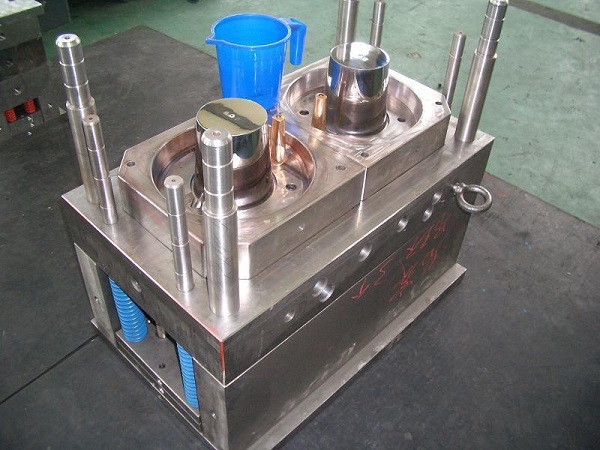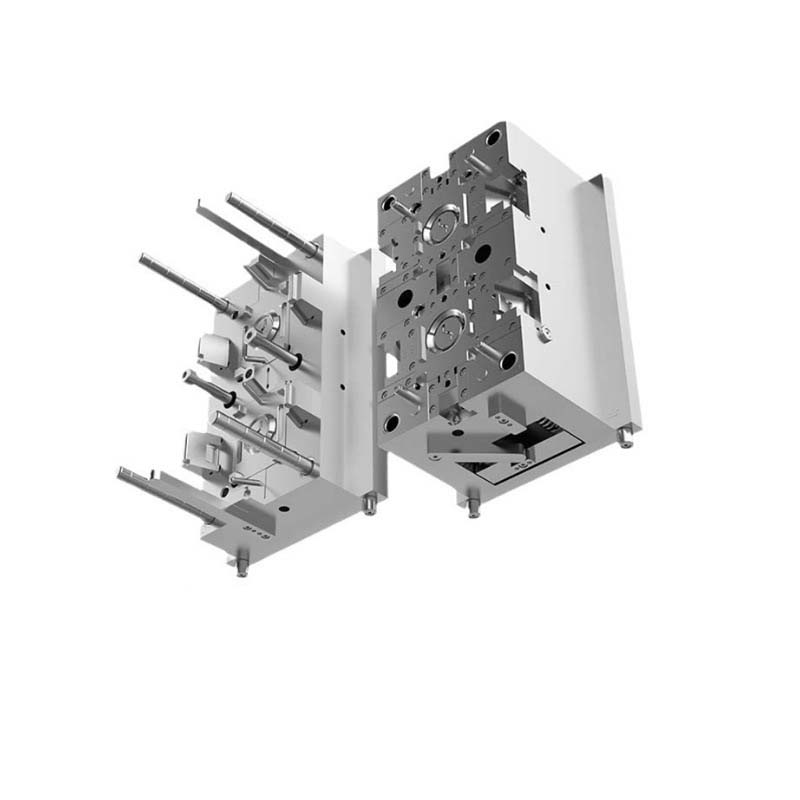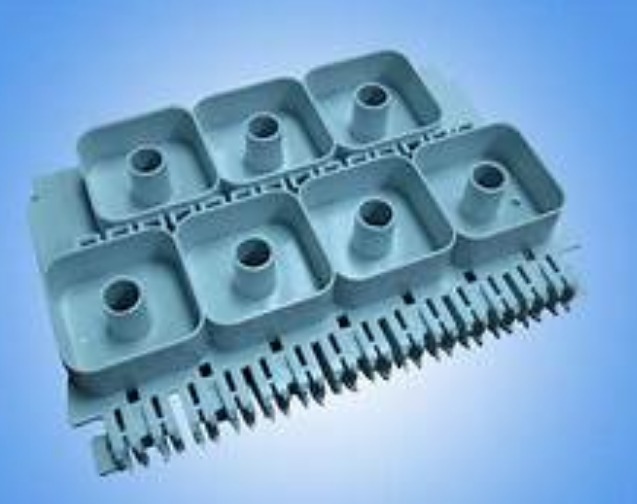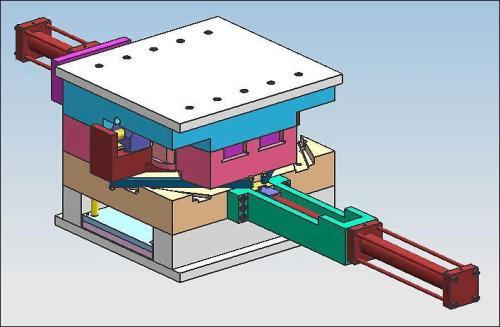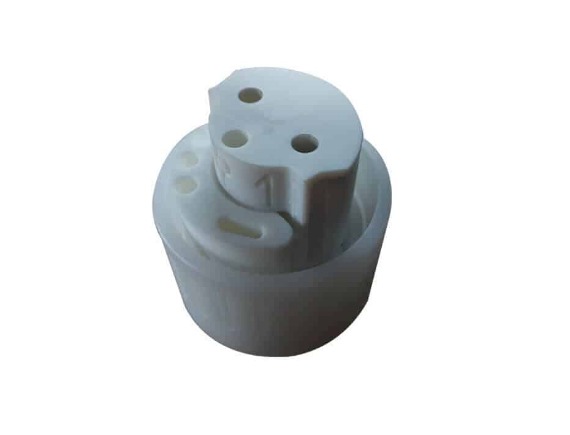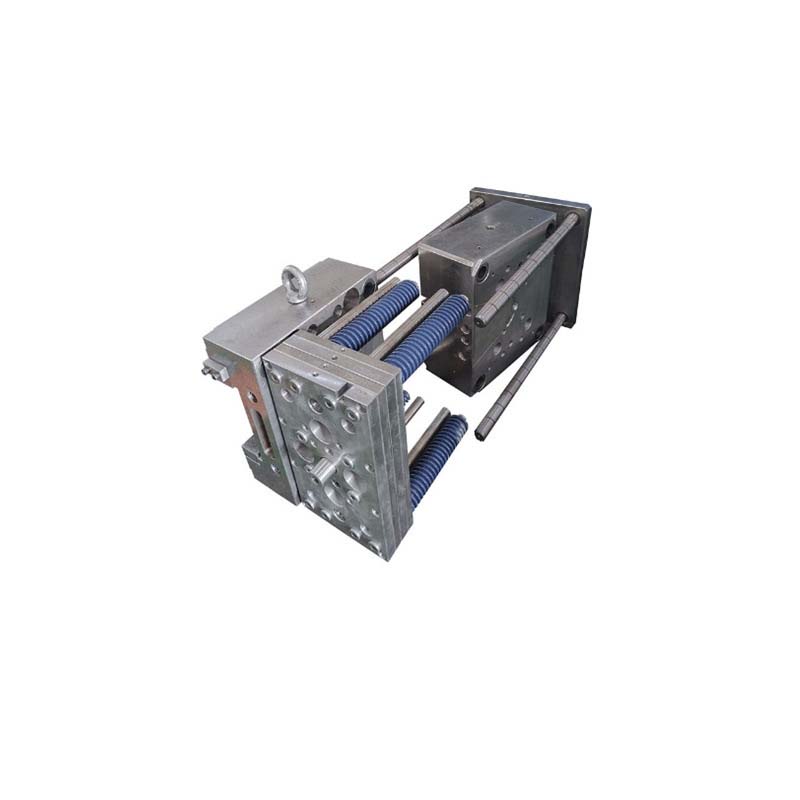Quality: The Bedrock of Mould Excellence
Quality stands as the cornerstone of any successful mould. A high - quality mould is not only a guarantee of consistent product production but also a symbol of reliability and durability in manufacturing processes.
Material Selection
The choice of materials for a mould is of utmost importance. Different applications demand different material properties. For instance, in the automotive industry, moulds used for manufacturing car components like bumpers or engine parts often require high - strength steel. A study by the International Mould & Die Association showed that moulds made from high - quality steel, such as P20 steel which has excellent machinability and polishability, can withstand up to 300,000 injection cycles before showing signs of significant wear. In contrast, low - quality steel may only endure 50,000 - 100,000 cycles. High - quality materials enhance the mould's durability, ensuring that it can produce a large number of high - quality products over an extended period. They also contribute to better dimensional stability, reducing the risk of product deformation during the manufacturing process.
Precision Manufacturing
Precision manufacturing is another crucial aspect of mould quality. High - precision machining can significantly reduce the defect rate. Advanced CNC (Computer Numerical Control) machines are capable of achieving tolerances as low as ±0.001mm. A case in point is a smartphone component manufacturing company. By using high - precision moulds produced with state - of - the - art CNC machines, they reduced their product defect rate from 8% to 2% within a year. Precise manufacturing ensures that the mould's cavities and cores are fabricated to exact specifications. This not only improves the accuracy of the final product but also reduces the need for post - production finishing processes, saving both time and cost.
Rigorous Quality Control
Rigorous quality control measures are essential to guarantee mould quality. This includes a series of inspections and tests at different stages of production. Before the mould enters production, it undergoes a comprehensive dimensional inspection. Coordinate Measuring Machines (CMMs) are often used to verify that all the dimensions of the mould match the design specifications. During production, sampling inspections are carried out regularly. For example, every 500 products produced from the mould are inspected for defects such as flash, short shots, or dimensional inaccuracies. After the production run, the mould is again inspected for any signs of wear or damage. Additionally, functional tests, such as testing the mould's ejection system or cooling efficiency, are also an integral part of the quality control process.
Price: Balancing Cost and Value
Price is a crucial factor that often determines the choice of a mould for manufacturers. It's a complex aspect that involves a balance between cost - effectiveness and the value that the mould brings to the production process.
Cost Components
The price of a mould is composed of several key elements.
| Cost Component | Percentage Range |
| Materials (including raw materials and standard parts) | 15% - 30% |
| Manufacturing (processing fees and potential profits) | 30% - 50% |
| R & D and Design | 10% - 15% |
| Testing (such as trial - moulding) | 3% - 5% (3% for large - medium sized moulds, 5% for small precision moulds) |
| Packaging and Transportation | 3% (or calculated based on actual situation) |
| Tax (e.g., 17% VAT in some regions) | 17% |
Materials form the foundation of a mould's cost. High - quality materials like special alloy steels for metal - forming moulds or engineering plastics for injection - moulding can be quite expensive. For example, a mould made from high - grade P20 steel for automotive component production will have a higher material cost compared to a mould made from a lower - grade steel. Manufacturing costs include machining, polishing, and assembly. Complex moulds with intricate geometries require more machining time and highly skilled labor, driving up these costs. R & D and design expenses cover the efforts put into creating an optimized mould structure, considering factors like product design, production efficiency, and mould lifespan.
Price - Quality Correlation
There is a clear correlation between the price of a mould and its quality. Generally, lower - priced moulds may seem attractive in the short - term due to their cost - saving potential. However, they often come with significant drawbacks. A study by a manufacturing research institute found that low - cost moulds are more likely to have dimensional inaccuracies, which can lead to a high defect rate in the final products. In fact, products made from low - price moulds had a defect rate of up to 15%, compared to less than 5% for products from high - quality, higher - priced moulds.
High - price moulds, on the other hand, are usually associated with superior quality. They are made from better materials, manufactured with high - precision equipment, and often come with advanced design features. For instance, a high - end injection mould used in the production of medical devices is not only made of top - grade corrosion - resistant steel but also designed with an optimized cooling system. This ensures that the mould can produce high - precision components with consistent quality over a long period, justifying its higher cost.
Cost - Saving Strategies
There are several strategies that manufacturers can adopt to reduce mould costs without sacrificing quality. One effective approach is design optimization. By simplifying the mould structure while maintaining its functionality, companies can significantly cut down on manufacturing complexity and cost. For example, a consumer electronics company redesigned its plastic casing mould. Through value engineering, they reduced the number of moving parts in the mould by 20%. As a result, the manufacturing cost of the mould decreased by 15%, and the production cycle was also shortened by 10%.
Another strategy is bulk purchasing. When ordering materials or components in large quantities, manufacturers can often negotiate better prices. A furniture manufacturing company that regularly orders moulds for wooden parts decided to pool their orders for a year. By doing so, they were able to get a 10% discount on the cost of steel for the moulds from their supplier, leading to substantial savings over time. Additionally, choosing a reliable and cost - effective mould supplier can also make a difference. Some suppliers offer competitive prices without compromising on quality, and building long - term relationships with them can result in preferential pricing and better service.
Service: Beyond the Product
Service is an integral part of the mould - related business. It encompasses pre - sales support, after - sales assistance, and customized service solutions, all of which are crucial for meeting and exceeding customer expectations.
Pre - sales Service
Pre - sales service is the first point of contact between the mould supplier and the customer. It mainly includes providing professional consultation and detailed solution design. When a customer has a mould requirement, for example, a toy manufacturer planning to launch a new line of action figures, the pre - sales team should offer in - depth advice. They can discuss different mould - making technologies suitable for the complex shapes of the action figures, such as multi - cavity injection moulding which can increase production efficiency.
In terms of solution design, the team will create a comprehensive plan based on the customer's production volume, product quality requirements, and budget. This plan may include a detailed breakdown of the mould structure, the selection of appropriate materials, and an estimated production schedule. By doing so, they help the customer clearly define their needs and make informed decisions.
After - sales Service
After - sales service is equally important. Key after - sales services include mould maintenance, repair, and technical support. Regular maintenance can significantly extend the lifespan of a mould. A mould used in the packaging industry, for instance, may require quarterly maintenance. During maintenance, technicians will check for signs of wear in critical components like the ejector pins and the runner system.
If a mould malfunctions, the supplier's ability to respond promptly is crucial. In case of a sudden breakdown in a food - packaging mould, which could halt production, the after - sales team should be able to dispatch technicians within 24 hours. They should also provide continuous technical support, answering any questions the customer may have regarding mould operation or optimization. This kind of reliable after - sales service ensures that the customer can use the mould smoothly over the long term.
Customized Service Solutions
Customized service solutions are essential to meet the diverse needs of different customers. Different industries and products have unique requirements for moulds. A medical device manufacturer, for example, needs moulds with extremely high precision and strict hygiene standards. Their moulds must be made of materials that are not only corrosion - resistant but also meet biocompatibility requirements.
A customized service solution for this medical device manufacturer would involve close cooperation between the supplier and the customer throughout the entire process, from design to production. The supplier may need to develop special quality control procedures to ensure that the mould meets the strict medical standards. This tailored approach ensures that the customer gets a mould that perfectly suits their specific needs, ultimately contributing to the success of their products in the market.
In conclusion, quality, price, and service are the four cornerstones of a successful mould - related business. By focusing on these elements, mould suppliers can build long - term relationships with their customers and gain a competitive edge in the market.
Yigu Technology's View:
As a non - standard plastic metal products custom supplier, Yigu Technology firmly believes that the four elements of mould are of utmost importance. Quality is our top priority, ensuring every mould withstands rigorous tests. We offer competitive prices by optimizing production processes. Our pre - sales team provides in - depth consultations, and after - sales, we offer prompt support. Customized service is our forte; we tailor solutions to meet each client's unique demands, aiming to be the reliable partner in the mould industry.
The Fourth Element: Innovation (Optional, if needed to expand)
Innovation is the driving force that propels the mould industry forward. In a highly competitive market, innovative moulds can provide manufacturers with a significant edge, whether it's in terms of production efficiency, product quality, or cost - effectiveness.
Technological Innovation
The application of new technologies in mould manufacturing has brought about revolutionary changes. 3D printing, for example, has emerged as a game - changer in the mould - making process. It allows for the creation of complex mould geometries that are difficult or even impossible to achieve with traditional manufacturing methods. A study by a leading manufacturing research firm found that 3D - printed moulds can reduce the production time by up to 40% compared to conventional moulds. This is because 3D printing can directly transform a digital model into a physical mould, eliminating the need for multiple machining steps.
Another notable technological innovation is the development of intelligent moulds. These moulds are equipped with sensors that can monitor various parameters during the production process, such as temperature, pressure, and vibration. The data collected by these sensors can be used to optimize the production process in real - time. For instance, if the temperature in a certain area of the mould is too high, the intelligent system can adjust the cooling rate to ensure that the mould and the products being produced remain within the optimal temperature range. This not only improves the quality of the products but also extends the lifespan of the mould.
Design Innovation
Innovative design plays a crucial role in enhancing the performance of moulds. A new generation of moulds with innovative structures is constantly emerging. Take, for example, a recently patented mould structure that features a unique multi - cavity design. This design allows for the simultaneous production of multiple products with different shapes and sizes within a single mould. A plastics manufacturing company that adopted this new - design mould saw a 30% increase in production efficiency.
Moreover, innovative design can also address some of the long - standing challenges in mould manufacturing. For example, a new mould design has been developed to solve the problem of material flow imbalance during injection moulding. By optimizing the runner system and the layout of the cavities, this new design ensures that the molten plastic is evenly distributed, reducing the occurrence of defects such as short shots and weld lines. This kind of design innovation not only improves the quality of the final products but also reduces the need for post - production rework, saving both time and cost.
Yigu Technology's Perspective
As a non - standard plastic metal products custom Supplier, Yigu Technology deeply understands the significance of the four elements - quality, price, service, and innovation - in the mould business.
Quality is our top priority. We source high - grade materials and implement strict quality control at every production stage. Our advanced manufacturing techniques ensure that each mould meets the highest standards, with precision and durability that customers can rely on.
Price - wise, we strive to offer reasonable and transparent pricing. By streamlining our production processes and optimizing resource utilization, we keep costs down without sacrificing quality. This allows us to provide cost - effective solutions tailored to our customers' budgets.
Service is where we truly shine. Our pre - sales team offers in - depth consultations, helping customers clarify their needs and choose the best mould solutions. After - sales, we provide prompt maintenance, repair, and technical support. We also offer customized services, tailoring every aspect of our offerings to meet the unique demands of each customer. Whether it's a complex design or a tight production schedule, Yigu Technology is committed to being a reliable partner in the mould industry, helping customers achieve their goals efficiently and effectively.
